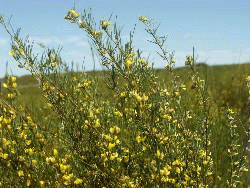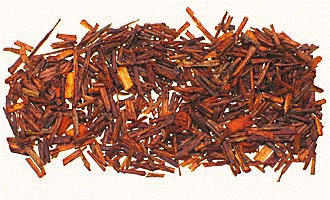|
|||||
|
|||||||
|
    An initiative of :Stichting Food-Info
|
| Food-Info.net> Questions and Answers > Food Products > Tea What is rooibos tea ?Rooibos, meaning "red bush in Afrikaans, is a South African plant of the Legume family (Fabaceae, also known as Leguminosae), with bright green, needle-like leaves that turn red upon processing. The shrub, Aspalathus linearis, has a very limited growing area, only in the Cedarberg Mountains of the Western Cape of South Africa. The plant is totally unrelated to the normal tea plant (Camellia sinensis).  The mountain-dwelling people of the Khoi tribe who live in that area were the first to develop a method for making tea from rooibos, a practice traced back at least 300 years. This tea was also appreciated by the European settlers in the 19th and 20th century. Though the process of making the tea leaves ready for brewing has become more automated in recent years, the steps remain the same: the leaves (and sometimes twigs) are picked, bruised, oxidised ("fermented"), then sun-dried. It is the bruising step, in which the leaves are hammered or crushed, that allows the material to develop its distinctive red color during the oxidation process (similar to the normal tea oxidation). The tea, cherished for its deep aroma and full-bodied taste is the most popular drink in South Africa. It is enjoyed hot or iced, plain or sweetened, with milk or without.  Rooibos is rich in anti-oxidants and flavonoids and contains higher concentrations of these than normal tea. Although no health claims of rooibos tea have scientifically been proven, a lot of research is being carried out on possible health benefits of rooibos tea. Active anti-oxidants found in rooibos are quercetine, luteolin, isoquercetrin and rutin. Rooibos does not contain caffeine and is low in tannins. Sources: |
|
| ||
| Food-Info.net is an initiative of Stichting Food-Info, The Netherlands | ||||||